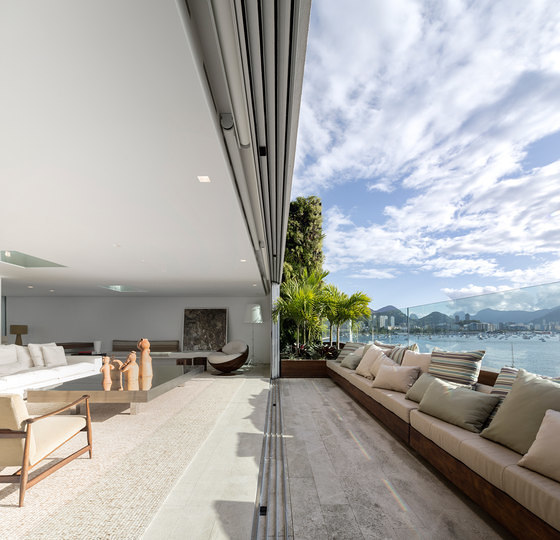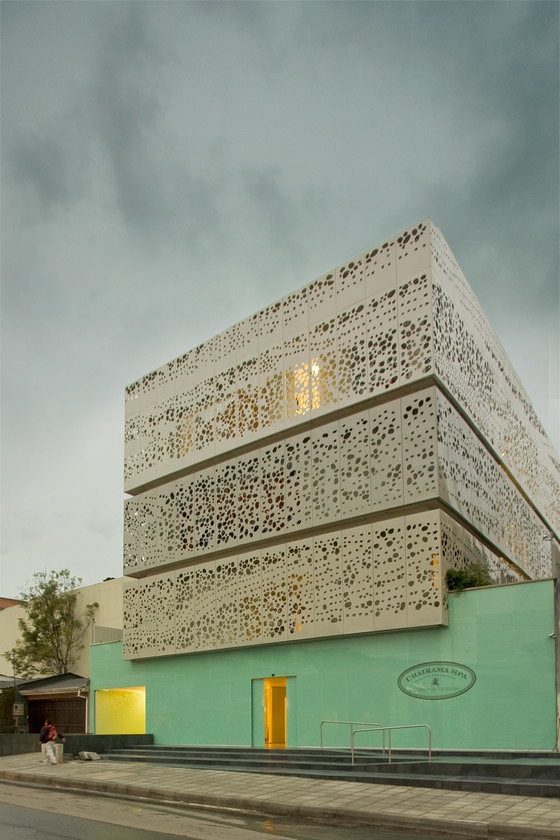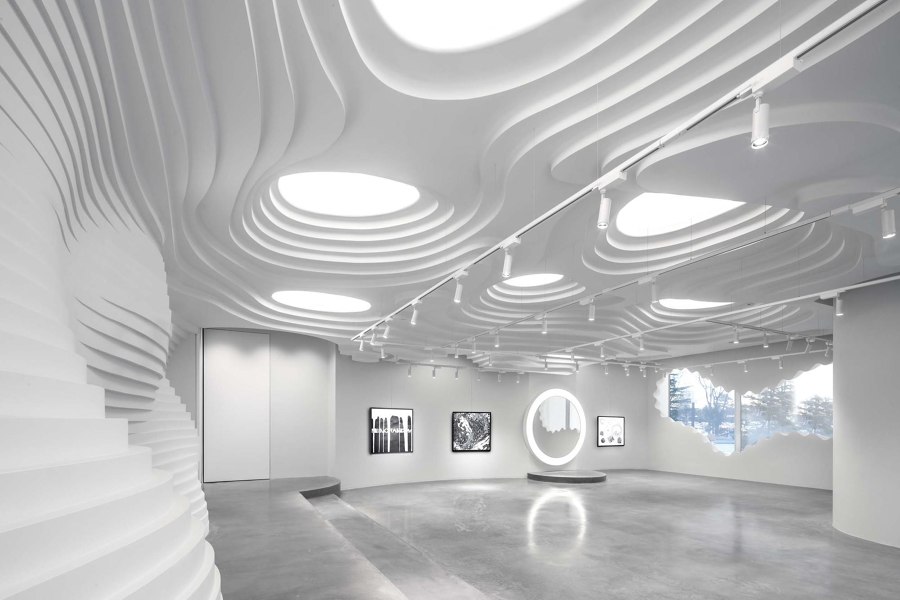From facades to furniture: Seven ways architects and designers use glass to create modern spaces
Texte par James Wormald
20.01.22
Seven different ways architects, designers and specifiers can utilise glass to create light, modern spaces, as well as magical and mysterious environments.
The black reflective glass used in the Guiyang Zhongshuge bookstore creates a magical hall of mirrors for readers to lose themselves. Photo: Shao Feng
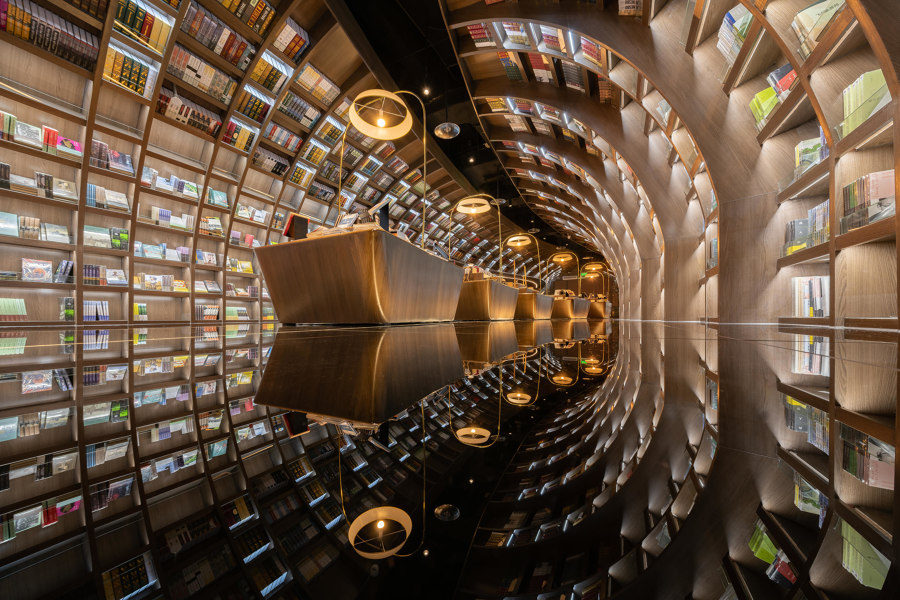
The black reflective glass used in the Guiyang Zhongshuge bookstore creates a magical hall of mirrors for readers to lose themselves. Photo: Shao Feng
×The glass-shatter sound effect has been a mainstay of classic comedy routines for a long time. Whenever a lightweight prop object flies off-screen or stage, it inevitably smashes through glass a beat later. Right now, it’s still amusing, if harmlessly ludicrous, but before long, the idea of a rogue schoolchild’s rogue football shattering through a neighbour’s window will be met only with query and disdain.
This is because modern glass products are completely different from their ancestry. Strong and stable yet pliable, and able to accurately position themselves anywhere on the road from transparency to opacity. All are characteristics that make glass eminently suitable for old and new applications, in both the worlds of architecture and interiors.
The Urca penthouse (top) uses wide glass doors to talk to the landscape, while the Europ Assistance Building (bottom) facade's Madras Transparency Glass is fed with LED light. Photos: Fernando Guerra & AO-Photos
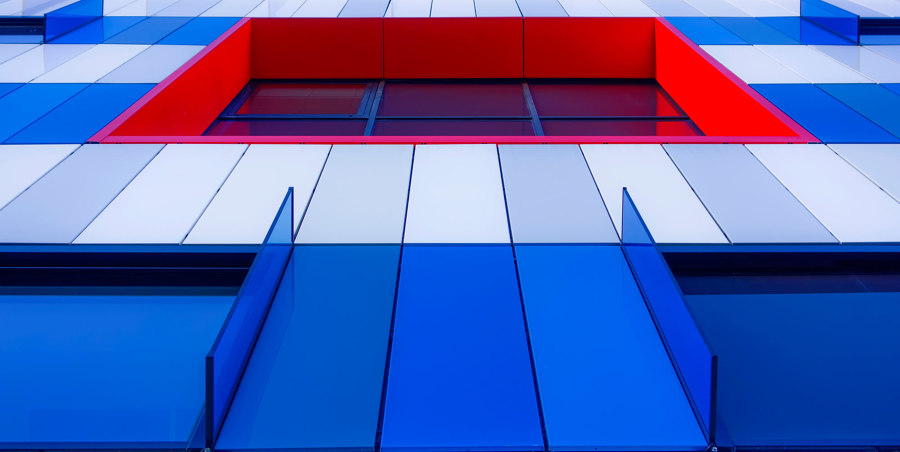
The Urca penthouse (top) uses wide glass doors to talk to the landscape, while the Europ Assistance Building (bottom) facade's Madras Transparency Glass is fed with LED light. Photos: Fernando Guerra & AO-Photos
×In exterior facades
Glass reflects sunlight like few other building materials can. Glass-clad buildings shine on a city street like the proverbial diamond in a rough landscape of dated architecture. In residential projects like the Urca penthouse in Rio de Janeiro, Brazil, huge sliding glass doors offer a widescreen presentation of the landscape. While in modern office buildings, typically-sleek glass facades may provide directors with their coveted corner-office view, but the two-dimensional look is so ubiquitous it’s bordering on boring.
Glass-clad buildings shine on a city street like the proverbial diamond in a rough landscape of dated architecture
The Europ Assistance Building in Paris, France, however, takes things a few steps further. Using laminated Madras Transparency glass from specialist Vitrealspecchi, striking tones are added to the facade in keeping with the building’s corporate identity. LED light is then fed into the glass and evenly spread out via a pattern of points across its surface, transforming the office’s colourful presence by night.
Bogotá's Spa Chairama combines glass with patterned laser-cut metal for a facade that doubles as an intricate interior wallcovering. Photos: Sergio Gomez
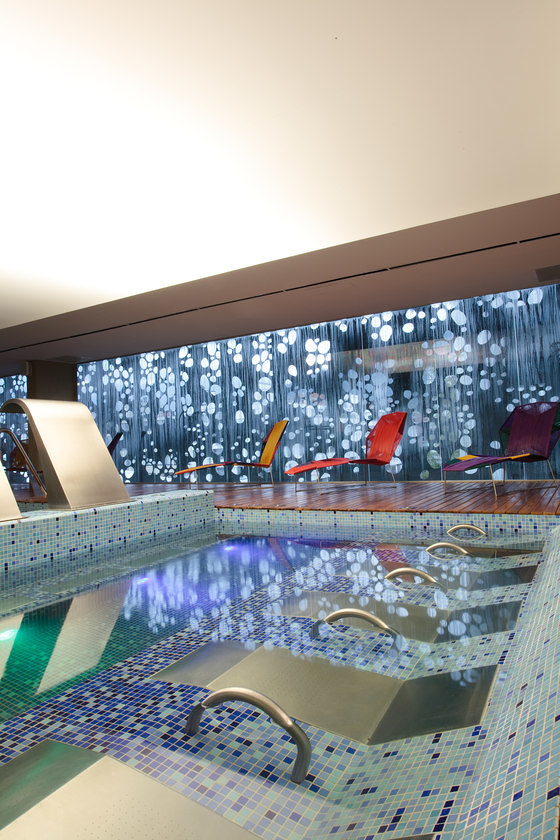
Bogotá's Spa Chairama combines glass with patterned laser-cut metal for a facade that doubles as an intricate interior wallcovering. Photos: Sergio Gomez
×In interior facades
Sometimes a great strength can also be a biggest weakness. Glass’s superior transparency makes it perfect for welcoming both scenery and sunlight to interior spaces, but not so much when a little privacy is required.
The Spa Chairama in Bogotá, Colombia, combines an inner layer of glass with an outer layer of perforated metal. This dual skin gives the building a glimmering appearance from the outside, while underneath its lace-like coat, the glass layer allows light to subtly soak into the space. Although the perforated pattern creates an interesting dance of light in the spa’s pool and treatment rooms, the reflective glass partition also ensures their privacy.
Café 27 counteracts the solar heat gain of a glass ceiling with wooden slats, positioned to obstruct the daily sunlight. Photo: YiHuai Hu
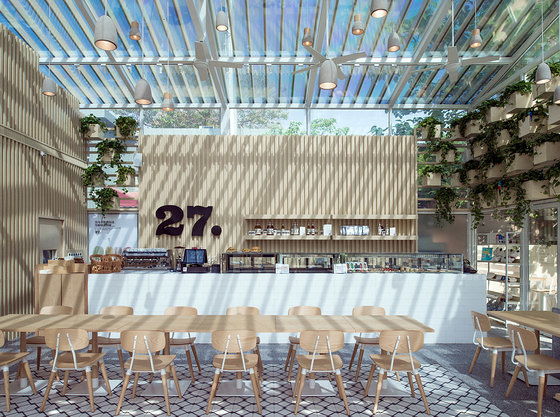
Café 27 counteracts the solar heat gain of a glass ceiling with wooden slats, positioned to obstruct the daily sunlight. Photo: YiHuai Hu
×As ceilings
With both strength and transparency, glass is suitable for roofs as well as walls. Greenhouses have utilised glass for over 100 years, but given that they’re also referred to as ‘hothouses’, it’s easy to spot the natural problem.
Café 27 in Beijing, China, solves the issue of heat gain by positioning slim wooden arches above its glass ceiling. Along with blocking and diffusing direct sunlight, the wooden stripes create a parallel pattern of light and shadow. In constant motion, the stripes become part of an interior motif that includes slatted wall coverings and plant walls. All of which inspires a gentle relationship with nature.
The Guiyang Zhongshuge bookstore's glass surfaces create a dreamworld of stories. Photos: Shao Feng
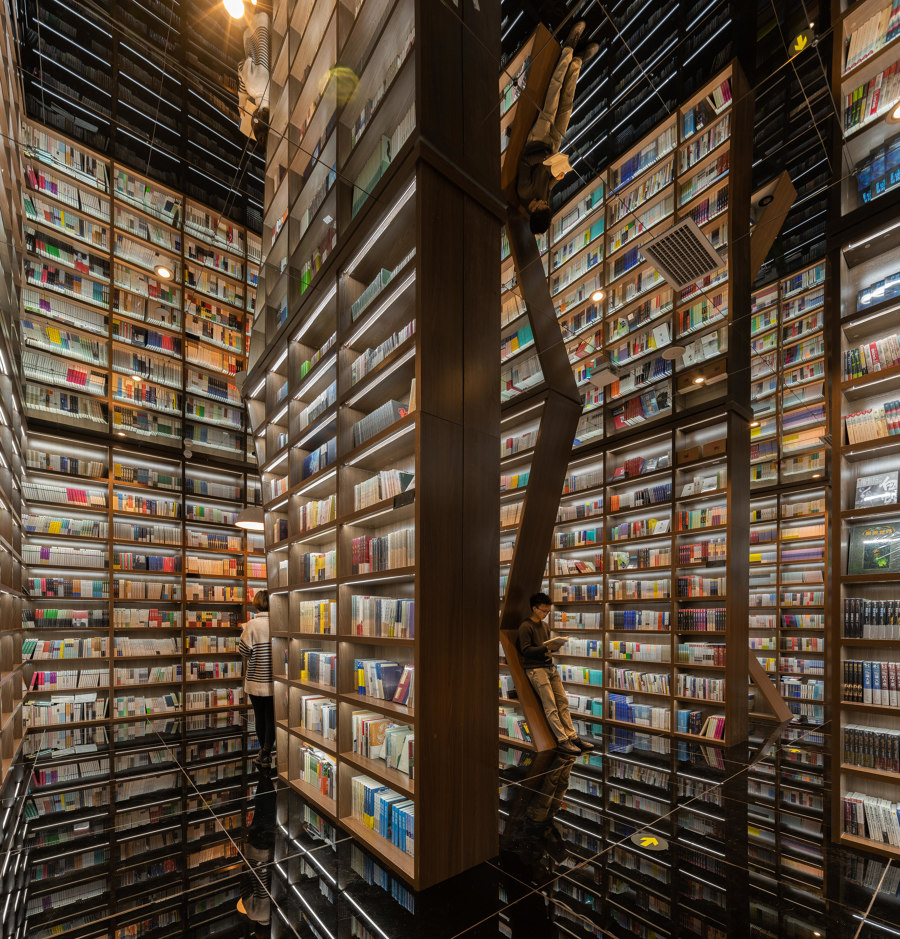
The Guiyang Zhongshuge bookstore's glass surfaces create a dreamworld of stories. Photos: Shao Feng
×As floors
Although glass flooring may at first seem strange and even scary, contemporary toughened glass is an architectural solution with stable assurance. The aforementioned Urca penthouse in Rio de Janeiro utilises glass both as a window to the world and as a vertical window to other parts of the home. Sunlight travels through a glass ceiling before entering an atrium intersected with horizontal partitions of stomach-churning glass walkways.
The crystal-clear black glass flooring spreads out like ink – surrounding the visitor in a world of literature that curves up and over their heads
Meanwhile, the reflective quality of glass gives the Guiyang Zhongshuge bookstore in Guiyang, China, a truly magical, dreamlike quality. The crystal-clear black glass flooring spreads out like ink – surrounding the visitor in a world of literature that curves up and over their heads, and down and under their feet as well.
Transparent glass features as a striking installation, as well as subtle partitioning, in the Moya restaurant in Como, Italy. Photo: Andrea Martiradonna
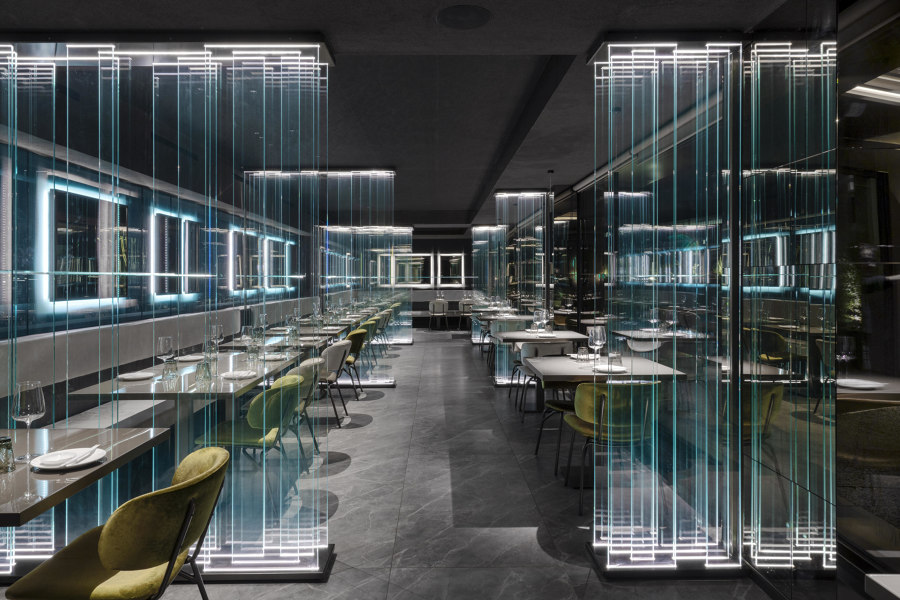
Transparent glass features as a striking installation, as well as subtle partitioning, in the Moya restaurant in Como, Italy. Photo: Andrea Martiradonna
×As partitions
Unwilling to accept a role confined to the wings of a room, glass is a material that can bring shine and sparkle to interior spaces too. Often selected for interior doors, walls and simple partitions due to its transparency and acoustic qualities, glass’s flexibility allows it to be shaped, cut, patterned and lit in mesmeric methods to create wonderfully artistic and sculptural partitions.
At the Moya restaurant in Como, Italy, for example, simple, slim panes of glass are lit at their base and randomly stacked amongst each other like a small glass forest. The effect is a striking piece of statement decoration, providing the hospitality space with subtle distortion between areas.
The concept Violet Blisssuite hotel rooms utilise glass in all its forms and applications. Photo: Gonzalo Botet
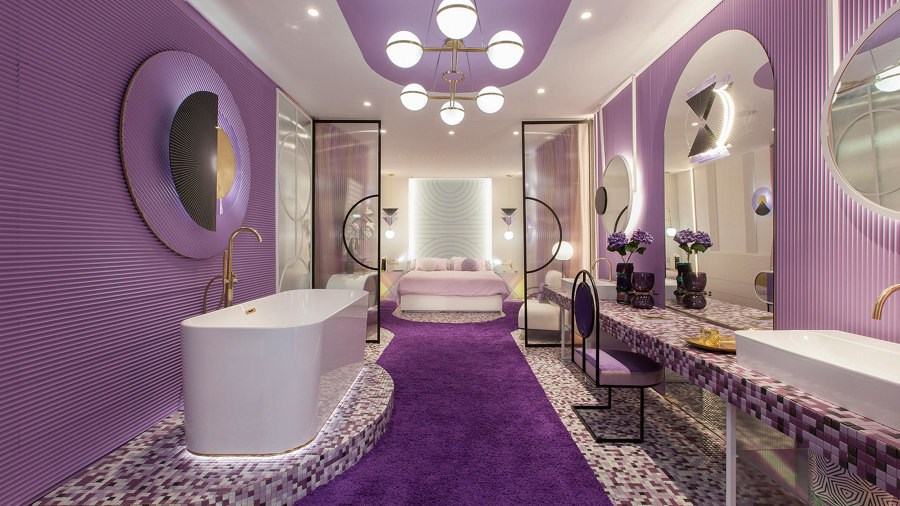
The concept Violet Blisssuite hotel rooms utilise glass in all its forms and applications. Photo: Gonzalo Botet
×In furniture
More than just a flat surface, glass’s other natural qualities such as durability and hygiene make it perfect for use in high-end furniture, too. Often this amounts to sleek, minimalist tabletops or cabinet doors, but the Violet Blisssuite from In Out Studio is a love letter to the material. The concept hotel room interiors in Marbella and Barcelona, Spain, include glass wall coverings, backlit glass headboards, suspended glass lights, glass mosaic flooring – which wraps itself up the walls and drapes down steps like plush carpet, pairs of folded-glass tables, double-basin glass pedestals in the bathrooms, and glass partitions that separate bath and bed areas with privacy.
Privacy glass allows this retail space to function both as a traditional store window and a private VIP viewing area. Photos: Weiqi Jin
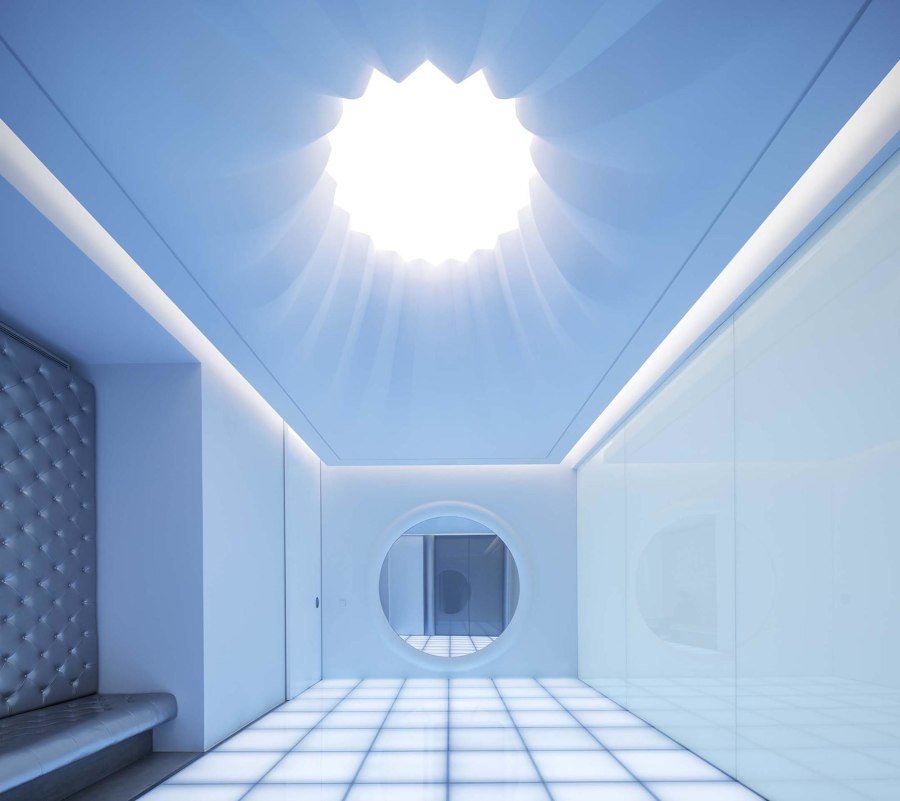
Privacy glass allows this retail space to function both as a traditional store window and a private VIP viewing area. Photos: Weiqi Jin
×Even for privacy
Noses may turn at the idea of placing private spaces behind transparent glass, but glass continues to be one of the most innovative materials around. Privacy glass laces the once-transparent material with liquid crystals which react to an electrical current. When the current flows, the crystals align and the glass appears normal. With no current passing through, however, the crystals return to their previous state, turning the glass completely opaque – while retaining its translucence.
The White Cave Gallery in Beijing, for example, is a luxury parametric-style retail interior with a topographical form. Amongst its features is a VIP room which, after drawing in customers from the street with a visible display, is able to transform the window into a frosted barrier, creating a private viewing space for VIP customers.
From the structural, to the decorative, to the functional, these modern uses of glass have transformed the material’s image.
© Architonic

